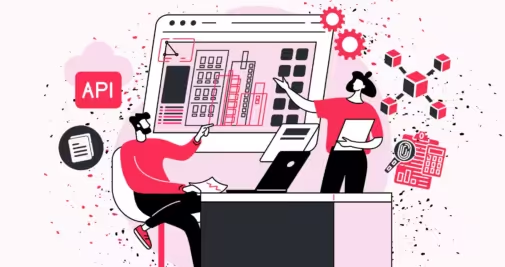This website uses cookies so that we can provide you with the best user experience possible. Cookie information is stored in your browser and performs functions such as recognising you when you return to our website and helping our team to understand which sections of the website you find most interesting and useful.
How well a machine can replace us shapes how much we trust it to bring results. When the results fall short the skepticism wins.
This is a perspective we need to understand before we dive into today’s piece. And it’s not new — it’s a lesson history’s taught us time and again.
Think of pulleys, levers, hand tools, and work animals — each tackled a specific problem better than human muscle. We trusted them to do a better job.
Pulleys lifted heavy stones with ease. Levers moved worlds. Animals pulled plows stronger than people could ever hope to. Rivers carried goods farther than any caravan, and wind-powered sailboats — well, they’re still fancy today for a good reason.
So why skepticism when embracing innovation?
Well, the experience shapes expectations.
If something didn’t work three years ago, it’s easy to think it won’t work now.
But here’s the kicker: technology’s pace is exponential. What used to be experimental is now efficient, what felt unreliable is now proving itself across industries. Chances are, it’s ready to deliver results to businesses of every size. It’s also bringing the present and the future we’re about to explore.
What Automation Used to Mean in Recent History
The Efficiency
In our recent history, automation was all about efficiency. Don’t look further than the 1990s when machines took over repetitive tasks.
In manufacturing, this meant conveyor belts, custom-built machinery like the one above, and robotic arms replacing manual labor in assembly lines. In offices, it meant software tools that could handle data entry or schedule meetings.
But there were limitations.
Hardware wasn’t capable of handling complex tasks. Machines were good at repetition but lacked flexibility. Automated processes depended heavily on local resources — expensive, bulky, rigid, and error-prone units. Computing power, compared to today, was nonexistent.
In these days, trust was straightforward: the thing worked or didn’t.
Cloud Beginnings Without Real Opportunities

As we moved into the early 2000s, the concept of the cloud began to emerge. This shift promised endless possibilities. However, cloud architecture was still in its infancy. Connectivity was limited, speeds were low, and bandwidth was, well, taken.
Automation could reach new heights, but only for those who could afford it. For the average business, well, it was nice reading material…
Then came the Internet of Things (IoT) and the first waves of AI in the 2010s. Connected devices offered real-time data. Early AI systems promised smarter decision-making.
Yet, even these advancements weren’t the game-changers. A lot of SMEs that jumped the gun too soon regretted it. The infrastructure was limited, AI models were basic, and automation in manufacturing, per se, still required human oversight. Machines could perform repetitive tasks but couldn’t adapt to unexpected situations.
The issue of trust here entered a new territory. There was a big promise: “What you get today will only get better tomorrow.” You can only imagine how this impacted the adoption. As we said, the experience shaped expectations — and for the large part, the experience fell short.
The Dreamers and The Realists
The mindset during the 2000s was split in two. There were Dreamers — those who believed the hype was real and that the future looked different. On the other hand, there were Realists — they were focused on cost-cutting and basic productivity gains. What we’re sure both Dreamers and Realists knew is that, at the time, the technology didn’t boost creativity. Yes, it offered tangible benefits. Yes, it was promising.
However, the tech freed up only a mere fraction of our potential.
But the seeds of something bigger had been planted. Cloud infrastructure had started maturing, AI models were becoming smarter, and the idea of automation as a tool to enhance rather than replace human work was just beginning to take hold.
The gap between what was promised and what was possible was narrowing.
Efficiency to Empowerment: A New Mindset on Automation
Today, the mindset has shifted from mere efficiency to empowerment. Automation is no longer just a grand promise or means to save money; it’s a tool to free up potential.
With advances in AI, automation can now handle tasks that require adaptability and even a degree of decision-making. For instance, in customer service, automation doesn’t just log complaints — it helps resolve them. It learns from past interactions to improve future responses. Embedded AI search is making more people click buy, and so forth.
The point is — companies are already winning with advanced tech.
In this new paradigm, automation augments human skills. It goes beyond allowing people to focus on what matters; beyond ‘productivity and efficiency’. It’s showing power to boost our strengths and fill our shortcomings.
It’s normal for us to view AI as a threat to jobs. After all, newspapers have been doing it for nearly a century. To some degree, the notion is true — predictable service roles, repetitive work, data processing, logistics, and transformation will surely feel the change.
However, these changes in general are bound to empower a skilled, qualified workforce.
Multi Omni; Fast Integrated; Promising Transformative
Historically, automation focused on individual tasks. In a warehouse, a machine might be responsible for picking items off shelves, or in an office, software might handle invoicing.
Each system functioned in isolation. The efficiency gains were real but limited; effective but not integrated into a seamless digital architecture.
Now, automation is about end-to-end process optimization; it’s about omni instead of multi.
Take the hybrid commerce industry as an example: automated systems create an omnichannel experience by integrating inventory management, demand forecasting, and personalized customer engagement across platforms.
Nike’s digital ecosystem illustrates this shift well. Their system connects online and in-store inventory. It allows customers to check product availability in real-time, whether shopping on the app, website, or in-store.
Predictive analytics anticipate demand. Automated fulfillment centers streamline packing and shipping to reduce delivery times. This integrated approach ensures a smooth shopping experience across all channels. It boats the entire process rather than just individual tasks.
The Level of Impact on Business and Everyday Life
The impact of automation today is palpable.
Let’s look at finance. Automated trading algorithms, capable of analyzing market data in milliseconds, dominate today’s stock markets. These algorithms, once basic and rule-based, now incorporate complex machine learning models to adjust trades in real-time.
E-commerce businesses can personalize the experience in one channel by using behavioral data from another channel. In healthcare, automation has advanced from managing patient data to assisting with complex surgeries. In pharmaceuticals, automated lab systems expedite drug development, enabling researchers to run multiple tests simultaneously. Intelligent PIM solutions are transforming the way manufacturing businesses handle their data.
Realizing ROI Across Industries
Automation has driven down operational costs dramatically. Manufacturing, for instance, has seen massive reductions in labor costs, with automated machinery capable of running without breaks. But the savings aren’t limited to labor. Advanced automation reduces error rates, minimizing waste and product recalls.
In logistics, companies like UPS have leveraged automation to optimize delivery routes and reduce fuel consumption. Their ORION (On-Road Integrated Optimization and Navigation) system analyzes millions of data points to determine the most efficient routes for drivers. They save the company an estimated $400 million annually. These industries are just a few examples of how automation directly impacts the bottom line, drives cost savings, and improves sustainability. The point at hand is this — the tech is used for good and it’s reaping fruit.
Elevated Perspective: The Future Seen from Above
Looking forward, the future of automation will be as much about preserving resources and achieving sustainability as it will be about profit. For companies, this means viewing automation as a driver of both environmental and economic resilience. At least that’s what we hope it will be — which brings us to an important point.
In thinking about the future of automation, we’re no longer just asking “What will it do for us?” but rather “What do we want it to become?” Finally, the tale of the times seems to support the notion that we will consider far more than just the same old, same old — profits, productivity, efficiency…This shift underscores a critical mindset — we’re not passive recipients of technology’s impacts; we’re active architects of its innovation. The pace of technological progress is inevitable, and the truth is, it’s shaped by the priorities and values we bring to it.
This perspective values intentionality over inevitability.
The implications here are profound. For instance, we can develop AI to support sustainable business practices, enrich human potential, or focus on inclusive applications. Alternatively, we can allow it to remain a tool for sheer efficiency. The outcome depends less on what automation can do and more on what we decide it should do.
What can we start doing today?
Well, picture what a relationship with technology looks like for you or your business. Start by asking:
- First, is technology helping us at full capacity?
- How far off is our business from what tech can offer at present?
- How can we fill the gap and amplify the positive impacts of automation?
- Finally, how does technology contribute to our goals, values, and future?
With the right mindset, you are not just preparing for the future; you’re actively modeling it.



